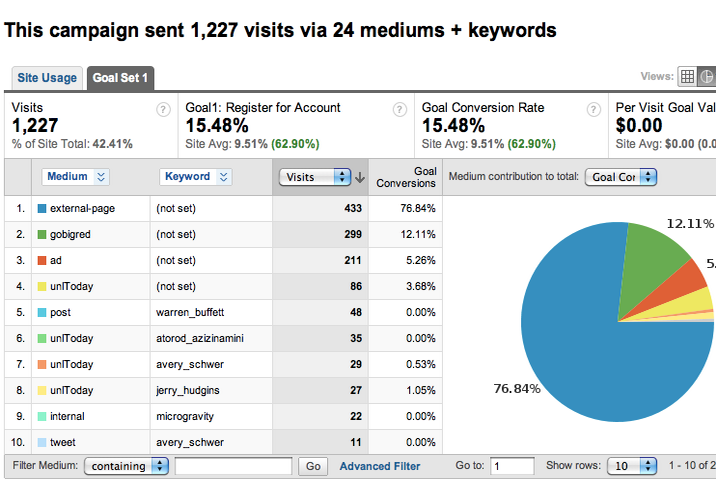enrollment
The bookends of an effective Web analytics strategy

A few months ago, Michael Lofstead explored landing pages and their role in college recruitment. He highlighted their importance and the opportunities available from a strategically-aligned communication flow.
Landing pages open the door to an entire world of rich metrics we can use to measure the success of not only our inbound marketing, but also the efficiencies of our Web sites. A great measurement strategy includes two bookends found in Google Analytics: campaign tagging and goal conversions.
Campaign tagging: Tracking the response to your communications
Most of our marketing campaigns are multifaceted; they leverage many mediums, expose various pieces of rich content, and are targeted at highly-segmented groups. In many cases, a single, campaign-specific landing page may receive traffic from outbound e-mails, social network posts, and traditional printed media. How can you tell which traffic source is working the best? Which is most likely to convert? Better yet, what’s your ROI?
Enter campaign tagging. With a little forethought and a quick tweak of the link used in your marketing piece, you can set up the tracking to collect the metrics you need to answer these questions. Campaign tagging is a process that appends parameters to the end of your landing page link. When a visitor clicks this link in an e-mail (or Facebook feed, online ad, Tweet, YouTube video, etc.), your landing page grabs hold of this information and stores it.
It takes less than five seconds to create each tagged link. Provided you create a unique link for each medium, content type, and source, you have the data required to measure individual effectiveness, therefore allowing you to identify the strongest strategies. Tweak a bit more and send out your next message!
Goal conversions: Measuring the effectiveness of your offers
Every site has a goal. In most cases, an overarching macro goal for your site is made up of many micro goals. For instance, an admissions site has a macro goal of recruiting students. As such, it has many micro goals related to each stage of the recruitment funnel. These micro goals need to be measured as conversions inside your Web analytics tool. This is the most crucial aspect of an effective measurement strategy.
With goal conversions, we have the ability to gauge nearly every metric in a context related to outcomes. Instead of looking at how many pageviews a particular piece of content generated, we can now measure the effectiveness of this content in relation to the desired end result. It’s only when we turn our Web analytics tool into an outcome-measuring machine that we can begin to analyze effectiveness.
Combining campaign tagging and goal conversions
In my introduction to campaign tagging and goal conversions, I metaphorically labeled them as “bookends.” Campaign tagging represents measurements used to identify and segment traffic based on marketing outreach. Another way to look at it: “How did my marketing strategies influence Web traffic?” Goal conversions are the end result, the outcome. They’re the final measurement of effectiveness. Web analytics are designed to measure and report on the activities between (and including) the two bookends.
When used together, a report I like to call “The Marketer’s Dream Report” is available. In a simple snapshot, we can quickly highlight which campaign strategies are funneling our users through conversion. Again, this places the context on outcomes: “Which of my marketing outreach efforts produced the most qualified site visitors and therefore contributed the most to my overall [recruitment] goal?”

Notice how you see the number of visits for each medium (communication method) and the goal conversions. Armed with this information, you can test different communications, measure results, and optimize your communication flow. Without this tracking, you’re really left in the dark.
If you have any questions about campaign tracking and goal conversions, or about improving your e-communications, please e-mail me.